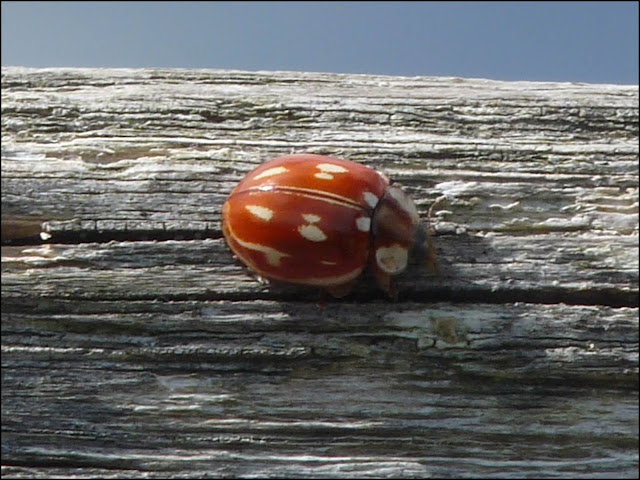David and I put aside fifteen minutes at the weekend to do a butterfly survey at Dunwich Heath for the
Big Butterfly Count. The heather has been superb this year, and the Small Whites were certainly out in force, as you can see from our results above.
If you would like to take part in the count, you will find the instructions
here.
*
I keep checking our own garden for butterflies. We have had one or two Large and Small Whites. Sadly the Skippers we had last year have not reappeared although we have refrained from mowing a patch of the yellow flowers (a form of Hawkweed?) that attracted them in 2015.
We saw few butterflies during our holiday along the Solway. I think we were just a bit early, given the chilly weather that we had at times.
There was a good show of Meadow Browns at Castle Acre priory last weekend. There were also a couple of Small Tortoiseshells in the monks' herb garden.
We saw a few Common Blues in a patch of heath at Dunwich some days ago.
NT Sutton Hoo has a few Small Coppers on the wing. They favoured sheltered lines of brushed-down grass in among the longer stems.
 |
| Painted Lady: I believe I have only seen one this season ... |
|
|
 |
| ... and here it is with its wings closed. |
The next two photos were taken on Dunwich Heath in rather dense area of vegetation.
 |
| Common Blue (I think) ... |
 |
| ... and with wings closed. |
And here is a butterfly in my garden ...
 |
| Small White |
The next two photos were taken en route to Scotland (we took quite a detour though!) at Gibraltar Point near Skegness ...
 |
| The orange-spotted caterpillar of the Brown-tail moth (moth, not butterfly) ... |
 |
| ... and the tent from which it emerges. |
The next photo shows a Peacock butterfly caterpillar. Look at those spines! This one was seen at Minsmere some weeks ago.
My final caterpillar is a Drinker Moth larva. I noticed it at Flatford Mill back in the spring.
The Big Butterfly Count is largely about ... butterflies, though it does include a couple of moths, the Silver Y and the colourful 6-spot Burnet, two species I want to cover in a future post.
I hope the inclusion of a couple of different moth species - in addition to the photos of lepidoptera in the larval stage - has not detracted from the butterflies in this post. I thought it would be fun to show a selection of my 2016 sightings to date. Some are little more than record shots, but they all add a little flourish to my personal observation list. I am no expert and, as ever, would be delighted to hear from anyone who can correct an ID!
I will leave you with a photo of the beautifully recreated monks' herb garden at
Castle Acre, which was a haven for butterflies when we were there last Saturday.



















































